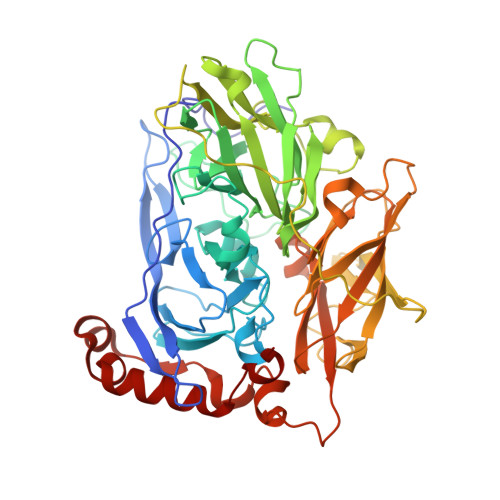Trp-His covalent adduct in bilirubin oxidase is crucial for effective bilirubin binding but has a minor role in electron transfer.
Koval, T., Svecova, L., Ostergaard, L.H., Skalova, T., Duskova, J., Hasek, J., Kolenko, P., Fejfarova, K., Stransky, J., Trundova, M., Dohnalek, J.(2019) Sci Rep 9: 13700-13700
- PubMed: 31548583
- DOI: https://doi.org/10.1038/s41598-019-50105-3
- Primary Citation of Related Structures:
6I3J, 6I3K, 6I3L - PubMed Abstract:
Unlike any protein studied so far, the active site of bilirubin oxidase from Myrothecium verrucaria contains a unique type of covalent link between tryptophan and histidine side chains. The role of this post-translational modification in substrate binding and oxidation is not sufficiently understood. Our structural and mutational studies provide evidence that this Trp396-His398 adduct modifies T1 copper coordination and is an important part of the substrate binding and oxidation site. The presence of the adduct is crucial for oxidation of substituted phenols and it substantially influences the rate of oxidation of bilirubin. Additionally, we bring the first structure of bilirubin oxidase in complex with one of its products, ferricyanide ion, interacting with the modified tryptophan side chain, Arg356 and the active site-forming loop 393-398. The results imply that structurally and chemically distinct types of substrates, including bilirubin, utilize the Trp-His adduct mainly for binding and to a smaller extent for electron transfer.
Organizational Affiliation:
Institute of Biotechnology of the Czech Academy of Sciences, v.v.i., Průmyslová 595, 252 50, Vestec, Czech Republic. tomas.koval@ibt.cas.cz.























